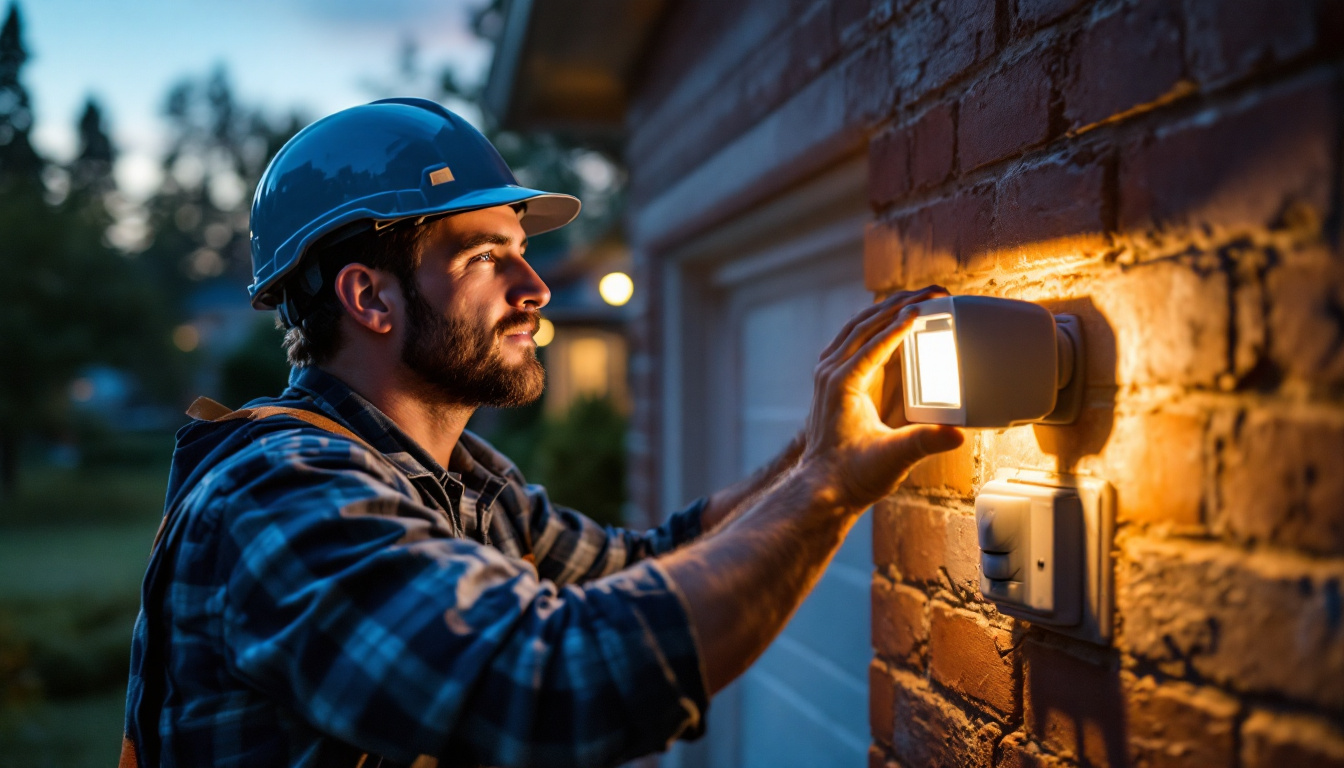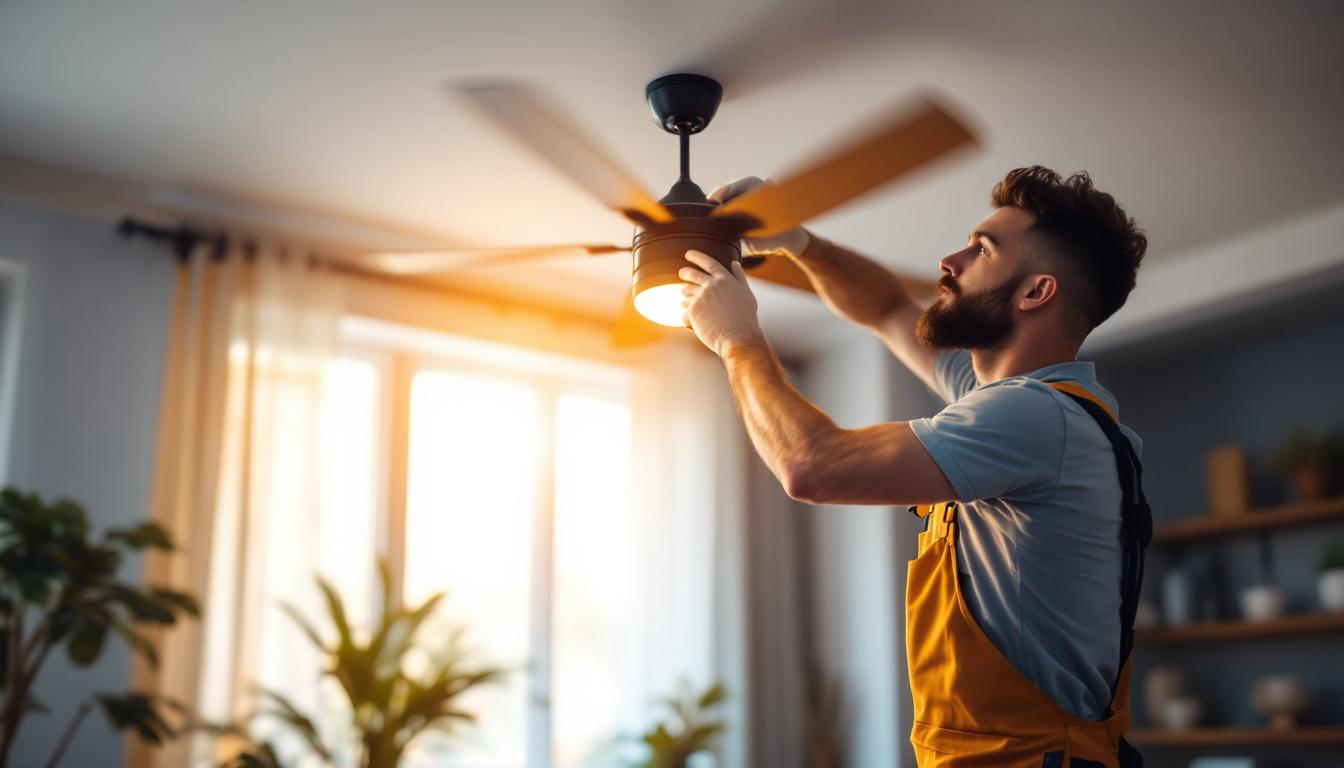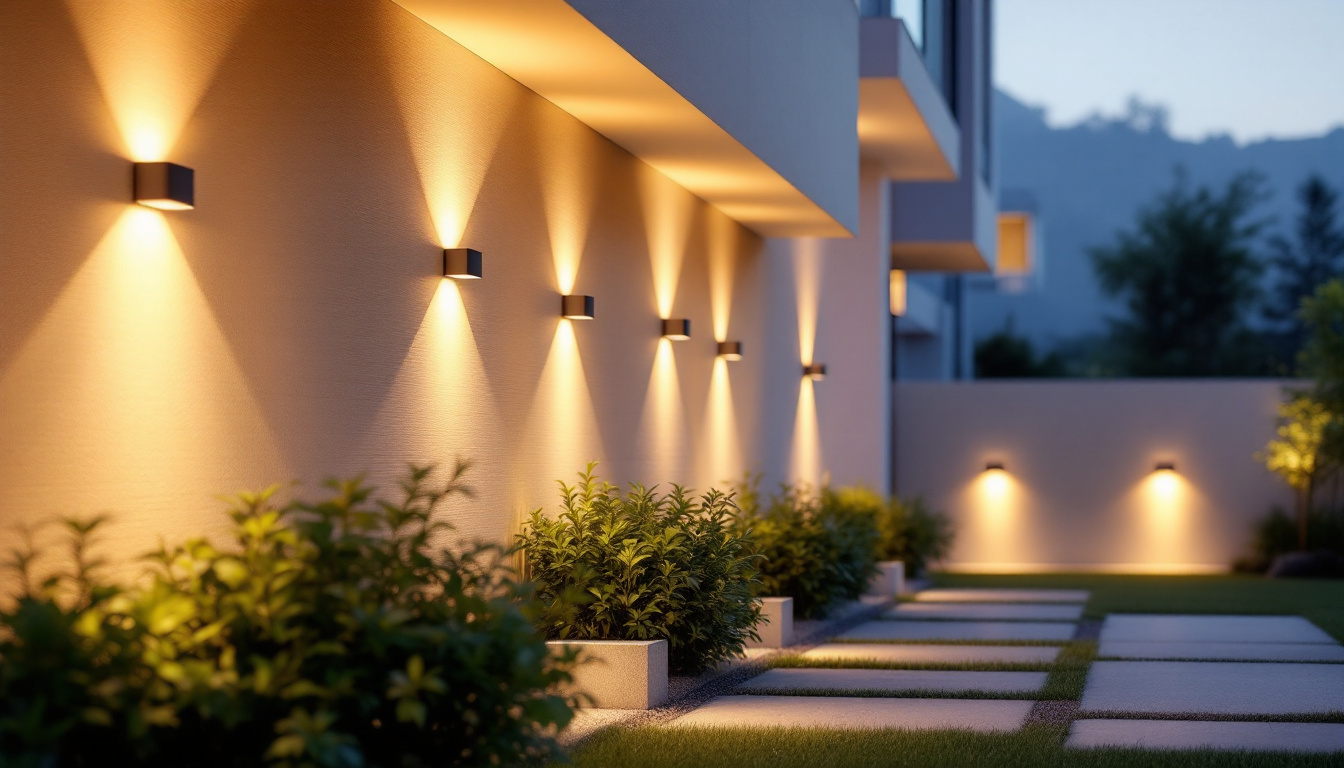
outdoor floodlight motion sensors are essential tools for enhancing security and energy efficiency in residential and commercial properties. These devices not only illuminate dark areas but also deter potential intruders by activating when motion is detected. For lighting contractors, mastering the intricacies of these systems can lead to improved client satisfaction and increased business opportunities.
Motion sensors work by using various technologies, including passive infrared (PIR), microwave, and dual-tech sensors. Each type has its unique advantages and applications, making it crucial for contractors to understand their functionality and best use cases. For instance, PIR sensors are particularly effective in detecting heat emitted from moving objects, making them ideal for outdoor settings where human or animal movement is expected. On the other hand, microwave sensors can cover a larger area and penetrate through obstacles, which makes them suitable for more complex environments.
Incorporating motion sensors into outdoor floodlights significantly enhances the effectiveness of lighting systems. They provide illumination only when needed, which saves energy and reduces costs for clients. Furthermore, the presence of motion-activated lights can act as a deterrent to criminal activity, providing an added layer of security for homes and businesses alike. This proactive approach to security not only protects property but also offers peace of mind to homeowners and business operators, knowing that their premises are under vigilant surveillance.
Moreover, these devices can be integrated with smart home systems, allowing for remote monitoring and control. This feature appeals to tech-savvy clients who prioritize convenience and efficiency in their lighting solutions. With the ability to customize settings through mobile apps, users can adjust sensitivity levels, set schedules, and even receive alerts when motion is detected. Additionally, many modern sensors are designed to work seamlessly with other smart devices, such as security cameras and alarms, creating a comprehensive security network that enhances overall safety. As technology continues to evolve, the integration of motion sensors with artificial intelligence is on the horizon, promising even smarter and more responsive lighting solutions that adapt to user behavior and environmental changes.
When selecting motion sensor technology for outdoor floodlights, contractors must consider several factors, including the specific needs of the client, the environment where the lights will be installed, and the desired range and sensitivity of the sensors. Understanding the differences among the available technologies is essential for making informed decisions.
PIR sensors are among the most commonly used motion detection technologies for outdoor floodlights. They detect changes in infrared radiation, which is emitted by warm bodies such as humans and animals. When a moving object enters the sensor’s field of view, the light activates.
These sensors are ideal for applications where the primary concern is detecting human movement. They are effective in residential settings, particularly for driveways and entryways. However, contractors should be aware of their limitations, such as the inability to detect motion through glass or other barriers. Additionally, PIR sensors can be influenced by environmental factors like temperature fluctuations, which may affect their sensitivity. For instance, during extremely cold weather, the sensor may struggle to differentiate between a human and the surrounding environment, potentially leading to missed detections.
Microwave sensors operate by emitting microwave signals and measuring the reflection of those signals off moving objects. They have a broader detection range compared to PIR sensors and can penetrate through obstacles, making them suitable for various environments.
These sensors are particularly useful in commercial settings, where the need for extensive coverage is paramount. However, they may be more sensitive to environmental factors, such as wind or rain, which can lead to false triggers. Moreover, the installation height can greatly influence their effectiveness; positioning them too high may reduce their ability to detect smaller movements, while too low may increase the likelihood of false alarms from small animals or debris. Therefore, careful consideration of installation parameters is crucial to optimize their performance.
Dual-tech sensors combine both PIR and microwave technologies, offering the advantages of both systems. By requiring activation from both technologies, these sensors can minimize false alarms while ensuring reliable detection.
For contractors, dual-tech sensors represent a versatile option that can be tailored to meet specific client needs. They are particularly beneficial in areas with high foot traffic, where a balance between sensitivity and accuracy is crucial. Furthermore, these sensors can adapt to various lighting conditions and environmental challenges, making them suitable for diverse applications, from residential gardens to commercial parking lots. The ability to fine-tune the sensitivity settings also allows contractors to customize the detection range based on the unique characteristics of the installation site, ensuring optimal performance and client satisfaction.
Proper installation of outdoor floodlight motion sensors is critical to ensure optimal performance and longevity. Lighting contractors must adhere to best practices to maximize the effectiveness of these systems and provide clients with reliable lighting solutions.
The placement of motion sensors plays a significant role in their effectiveness. Contractors should install sensors at a height that allows for maximum coverage while minimizing the risk of obstructions. Typically, a height of 8 to 10 feet is recommended for most residential applications.
Additionally, the sensors should be positioned to cover key areas such as driveways, walkways, and entry points. It is essential to consider the field of view and the detection range of the sensors to ensure comprehensive coverage without blind spots.
Most motion sensors come with adjustable sensitivity settings that allow contractors to customize the detection range based on the specific environment. Setting the sensitivity too high can lead to false triggers from animals or moving branches, while too low sensitivity may result in missed detections.
Contractors should test the sensors after installation to ensure they are functioning as intended. Adjustments may be necessary to strike the right balance between sensitivity and reliability.
When installing outdoor floodlights with motion sensors, proper wiring and power considerations are essential. Contractors should ensure that the electrical supply meets the requirements of the floodlight and sensor. This includes checking voltage compatibility and ensuring that all connections are secure and weatherproof.
It is also advisable to use outdoor-rated cables and connectors to prevent damage from environmental factors. Ensuring that the installation complies with local electrical codes is crucial for safety and reliability.
The integration of smart technology into outdoor floodlight motion sensors is becoming increasingly popular among clients. As smart home systems gain traction, lighting contractors should familiarize themselves with these technologies to meet evolving customer expectations.
Many modern motion sensor floodlights can connect to smart home systems, allowing users to control their lighting remotely via smartphones or tablets. This feature enhances convenience, enabling homeowners to turn lights on or off, adjust settings, and monitor activity from anywhere.
Contractors should consider recommending smart motion sensors to clients who prioritize technology and automation. Demonstrating how these systems can improve security and energy efficiency can help seal the deal during consultations.
Advanced motion sensor systems can send alerts to homeowners when motion is detected, providing real-time notifications that enhance security. Some systems even offer video surveillance capabilities, allowing users to view live feeds directly from their devices.
By integrating these features, contractors can offer clients a comprehensive security solution that goes beyond traditional lighting. This added value can differentiate contractors in a competitive market.
Encouraging clients to perform routine checks on their motion sensor systems can prevent issues before they arise. This includes cleaning the sensors to remove dirt and debris that may hinder performance, as well as checking the alignment and positioning of the lights.
Additionally, clients should be reminded to inspect the power supply and wiring periodically to ensure everything remains in good condition. Simple maintenance tasks can significantly extend the lifespan of the system.
Contractors should be prepared to assist clients with troubleshooting common issues that may arise with motion sensor floodlights. This includes addressing false alarms, adjusting sensitivity settings, and resolving connectivity problems with smart systems.
Providing clients with a troubleshooting guide can empower them to resolve minor issues independently, enhancing their overall experience with the system. This proactive approach can also strengthen the contractor-client relationship.
Mastering outdoor floodlight motion sensors is essential for lighting contractors looking to elevate their business. By understanding the various technologies, installation best practices, and integration of smart systems, contractors can provide clients with effective and reliable lighting solutions.
As the demand for energy-efficient and secure lighting solutions continues to grow, contractors who stay informed and adaptable will be well-positioned to meet the needs of their clients. Investing time in mastering motion sensor technology can lead to increased customer satisfaction, repeat business, and referrals.
In a competitive market, the ability to offer comprehensive lighting solutions that incorporate modern technology can set contractors apart. By focusing on quality installations and ongoing support, lighting contractors can build a reputation as trusted professionals in the industry.
Ready to take your lighting projects to the next level with the latest outdoor floodlight motion sensors? At LumenWholesale, we provide lighting contractors like you with the highest quality, spec-grade lighting products at the most competitive wholesale prices. Say goodbye to local distributor markups and hello to a vast selection of reliable, high-performance lighting essentials that meet rigorous industry standards. With the convenience of free shipping on bulk orders, you can stock up on premium lighting solutions without worrying about hidden fees or compromises. Elevate your business with the perfect blend of quality, affordability, and convenience. Visit LumenWholesale today for wholesale lighting at the best value.

Discover the future of illumination with modern solar-powered outdoor lighting.

Discover essential tips and best practices for lighting contractors when installing light fixture ceiling fans.

Discover essential tips and insights for lighting contractors on selecting and installing outdoor LED wall downlights.

Discover essential tips and strategies for lighting contractors to sidestep common industry pitfalls.